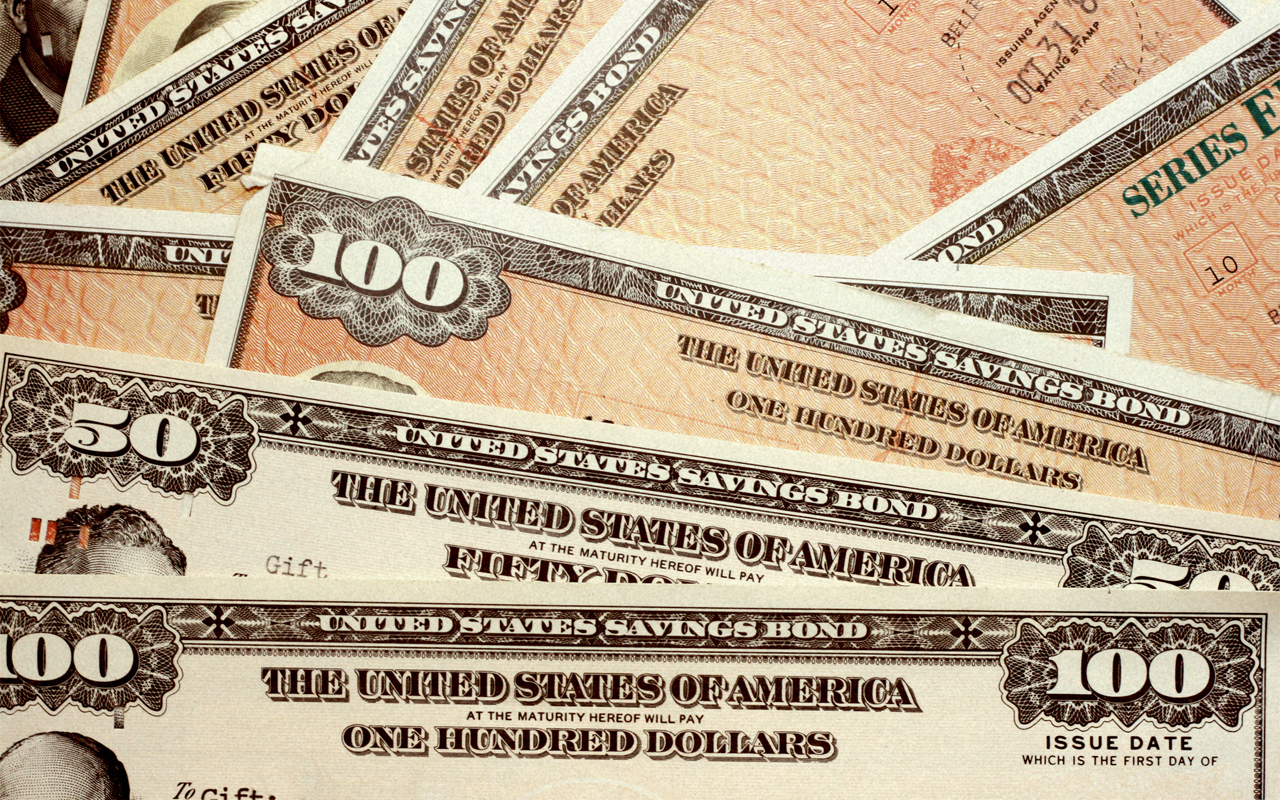7 Ways Higher Interest Rates Will Hit Your Pocketbook, Portfolio
The rate on the benchmark 10-year Treasury note has moved from 2.06% in September 2017 to a temporary high above 3.12% in May.


The rate on the benchmark 10-year Treasury note has moved from 2.06% in September 2017 to a temporary high above 3.12% in May. The roughly 1-percentage-point increase is not much for those of us who remember when interest rates were in the double digits, but it is not the absolute level that matters. The important point here is that after many years of impossibly low rates, interest rates are trending higher.
Rising rates have implications for your finances. They affect the interest you earn on your investments. They affect the interest you pay on your loans, from mortgages to credit cards. They also affect the overall economy, which can then trickle down to your mutual funds and retirement plans. It also means there is a greater demand for money from businesses wishing to expand, hire more workers or build new plants.
Should you pay attention? You bet you should.
Kiplinger sees rates moving slowly higher thanks to rising government deficits and slightly higher inflation. The Federal Reserve already is committed to raising short-term rates during the next several months because it’s concerned about the tightening labor market.
Here are seven ways higher interest rates can affect your pocketbook – and some moves you can make to protect yourself and even prosper.
Data is as of June 4, 2018.

Refinance to a Fixed-Rate Mortgage
For most homeowners, the investment in their home is likely the biggest part of their overall financial situation. Many purchasers over the past few years liked the idea of a variable-rate loan because they started with a lower rate than fixed-rate loans. With interest rates in general projected to stay low for a long time, risk seemed minimal.
A homeowner financing his or her castle in the early part of this decade might have gotten a 5/1 ARM at about 3%. This is an adjustable-rate mortgage loan that is fixed for the first five years, then readjusts annually based on then-current interest rates.
For argument’s sake, let’s say your mortgage is now more than five years old. Let’s also say the variable rate was tied to a short-term interest rate such as LIBOR (London Interbank Offered Rate), which is a widely used short-term benchmark. Since September, this rate jumped from 1.3% to 2.3%. That means your mortgage interest rate went up by 1%, too. Your monthly payment jumped 1% times the principal of the loan divided by 12.
For a $200,000 house, financed with 20% down, that means an additional $133 per month payment. While that may not sound like a lot, if rates continue to climb, so will your payments.
With rates still relatively low, refinancing to a fixed-rate mortgage could be the right move to lock in a reasonably low rate for the next 15 or 30 years. Current rates are near 4.6% for a 30-year fixed. That’s about 60 basis points above where the 5/1 ARM would have been after its first adjustment. And if the ARM were a year older than that, the new fixed rate could actually be below the adjusted variable rate.
Everyone must look at the specifics of their current mortgage to see if it makes sense to switch. If rates continue to climb, refinancing today at a fixed rate higher than your current variable rate could break even in a year or two, then provide lower rates for many years after that.

Buy that House, Car or Other Big-Ticket Item
If you will be in the market to buy a new home, a car or some other big item that you will lease or otherwise finance, you might want to do it sooner, rather than later. As with a mortgage, you can lock in a lower fixed rate now because it will cost more to finance your purchase later if rates do move higher.
There is no magic formula here. If you buy a car now and finance with a loan, you are in the same position as a homeowner looking to secure a mortgage to buy a property. Rates can move higher across the board, from a three-year car loan to a 30-year mortgage.
Even if you plan to lease your car, remember: Leases do come with an imbedded interest rate. It might not seem that way because you make a fixed payment every month, but that payment is calculated from the purchase cost of the car, any down payment, the prevailing interest rates and the presumed value of the vehicle at the end of the lease (called the residual value).
Just be sure that your rate is fixed so your payments will not go up no matter what happens with interest rates.

Personal Loans
The thought behind this is similar to making financed purchases. If you think you will need a large amount of money in a year or two, why not secure that loan now and lock in a low fixed rate?
Perhaps you think you will buy a vacation house in a few years. Or start a business. Or pay for a wedding.
According to CostOfWedding.com, the average cost for a wedding in the U.S. in 2017 was $25,764. That does not even include the honeymoon.
But that is nothing compared to the cost of four years of college. CollegeBoard.org estimates that a private four-year college costs $32,410 per year for tuition and fees. That does not include room and board.
You get the idea. If you are fairly sure you will need money later, you can take out the loan now. It can be a personal or business loan, or simply a home equity line of credit (HELOC). If you take an outright loan, you can offset some of the cost by investing in bonds that mature when you will need the funds.

Dump Your Variable-Rate Credit Cards
If you carry a balance on your credit cards (and if you do, you are not alone – the average household credit card debt is about $16,000), pay attention to rising interest rates. Many credit cards have variable rates, which can move higher when general interest rates move higher. Moreover, they are very sticky and tend not to fall quickly when other rates drop.
The silver lining is that credit-card rates are already lofty and do not have much room to continue even higher.
Variable-rate cards base the rate you pay on an index, possibly LIBOR or the prime rate, so an increase in the index means an increase in your payments. Therefore, a 1% rise in the index could mean an extra $12.50 per month to your payments – month after month after month.
Switching to a fixed-rate credit card could solve this problem. Again, you have to compare the rate you have now and how fast it can potentially increase to the fixed rates available in replacement credit cards.
Just be aware that even fixed-rate cards can see increases, albeit only periodically and not directly due to changes in interest rates.

Bank Accounts and Money Markets
Years of low interest rates took their toll on savers. With banks paying as little as 0.1% on your money, there was not much incentive to save at all. However, with short-term interest rates rising, things look a little brighter for mattress stuffers.
Rates for savings accounts are still a bit stingy at 0.6%, but that is a five-year high. Brokerage account money-market funds top 1.5% and higher. If you have $10,000 to $15,000 to park in your account, you can find checking accounts that pay 3%.
The bottom line here is that rising rates will favor savers over borrowers. Bank and money-market rates still are not going to make you rich, but at least they will give you a little bit back.

Bond Investments
Rising interest rates will hurt bonds and other fixed-income investments, but they also eventually will provide healthier interest payments down the road when you put new money to work. The task is to preserve your capital until that time.
It would be very simple to tell you to sell all your bond holdings and wait. But there are two big problems with that:
First, being completely out of the market puts you at the mercy of the market itself. What if rates do not go up? What if they go down? Tweaking your bond portfolio can be a good idea, but timing the whole portfolio is a high-risk maneuver. Second, you own bonds for a reason. Either you wanted to diversify against the risks in the stock market or you needed the steady income stream they provide. Parking all your money in cash, still earning a low amount, is probably not a good idea, either.
What you can do is bring down the overall exposure you have to rising rates. You can sell some of your long-term bond holdings and reinvest in shorter maturities. For example, the spread, or difference between a seven-year Treasury note and a 10-year Treasury note, is negligible right now. However, if rates move higher, the shorter note will hold its value better than the longer note. This is because prices move inversely with interest rates, and the longer the maturity, the more exaggerated the move.
Another strategy would be to take the money you get from your portfolio, either from interest payments or maturing bonds, and invest in things with shorter maturities, whether they be three-year corporate bonds or even bank CDs. That way, you will be assured to have at least some money coming due to reinvest at higher rates in a few years.

Stock Investments
Not all sectors of the stock market are created equally. Some portions get hurt when rates rise. Others actually benefit.
For example, since September of last year, when rates started to climb, the utilities sector is down about 10%, as measured by the Utilities Select Sector SPDR Fund (XLU). Utilities traditionally offer higher dividend yields, and many investors consider them to be “bond equivalents.” That means they act a lot like bonds.
Bank stocks, on the other hand, usually react positively to rising interest rates. Small bank stocks in particular got a boost from the pending changes to the Dodd-Frank Wall Street Reform and Consumer Protection Act and the rollback of restrictions. Since September, the SPDR S&P Regional Bank ETF (KRE) is up about 31%, compared to the Standard & Poor’s 500, which is up about 12%.
Other stock sectors that do better when rates are higher are natural-resource-based groups such as energy and precious metals. The reason is that rates can move higher on inflation and inflation favors hard assets.
The strategy here would be to trim positions in interest rate sensitive areas, such as utilities and consumer staples, and move into areas such as financials and natural resources. It does not mean getting out of all stocks, despite the warnings from pundits who think rising interest rates will severely damage the stock market.
Profit and prosper with the best of Kiplinger's advice on investing, taxes, retirement, personal finance and much more. Delivered daily. Enter your email in the box and click Sign Me Up.

-
 What to Do If You Plan to Make Catch-Up Contributions in 2026
What to Do If You Plan to Make Catch-Up Contributions in 2026Under new rules, you may lose an up-front deduction but gain tax-free income once you retire.
-
 If You'd Put $1,000 Into Lowe's Stock 20 Years Ago, Here's What You'd Have Today
If You'd Put $1,000 Into Lowe's Stock 20 Years Ago, Here's What You'd Have TodayLowe's stock has delivered disappointing returns recently, but it's been a great holding for truly patient investors.
-
 How to Max Out Your 401(k) in 2026 (New Limits are Higher)
How to Max Out Your 401(k) in 2026 (New Limits are Higher)In 2026, the maximum contribution limits for 401(k) plans have increased, giving you an excellent shot at maximizing your retirement savings.
-
 What Fed Rate Cuts Mean For Fixed-Income Investors
What Fed Rate Cuts Mean For Fixed-Income InvestorsThe Fed's rate-cutting campaign has the fixed-income market set for an encore of Q4 2024.
-
 What the Rich Know About Investing That You Don't
What the Rich Know About Investing That You Don'tPeople like Warren Buffett become people like Warren Buffett by following basic rules and being disciplined. Here's how to accumulate real wealth.
-
 How to Invest for Rising Data Integrity Risk
How to Invest for Rising Data Integrity RiskAmid a broad assault on venerable institutions, President Trump has targeted agencies responsible for data critical to markets. How should investors respond?
-
 The Most Tax-Friendly States for Investing in 2025 (Hint: There Are Two)
The Most Tax-Friendly States for Investing in 2025 (Hint: There Are Two)State Taxes Living in one of these places could lower your 2025 investment taxes — especially if you invest in real estate.
-
 The Final Countdown for Retirees with Investment Income
The Final Countdown for Retirees with Investment IncomeRetirement Tax Don’t assume Social Security withholding is enough. Some retirement income may require a quarterly estimated tax payment by the September 15 deadline.
-
 What Tariffs Mean for Your Sector Exposure
What Tariffs Mean for Your Sector ExposureNew, higher and changing tariffs will ripple through the economy and into share prices for many quarters to come.
-
 How to Invest for Fall Rate Cuts by the Fed
How to Invest for Fall Rate Cuts by the FedThe probability the Fed cuts interest rates by 25 basis points in October is now greater than 90%.
-
 Are Buffett and Berkshire About to Bail on Kraft Heinz Stock?
Are Buffett and Berkshire About to Bail on Kraft Heinz Stock?Warren Buffett and Berkshire Hathaway own a lot of Kraft Heinz stock, so what happens when they decide to sell KHC?
